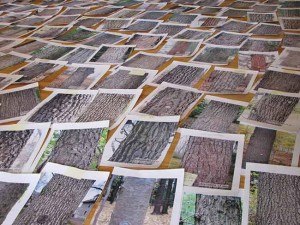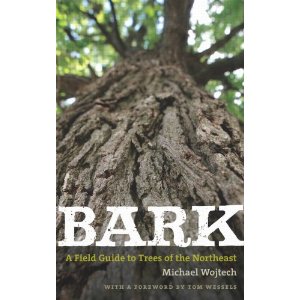Photo Journal: The River of Grass in Florida’s Everglades – Farlin Black
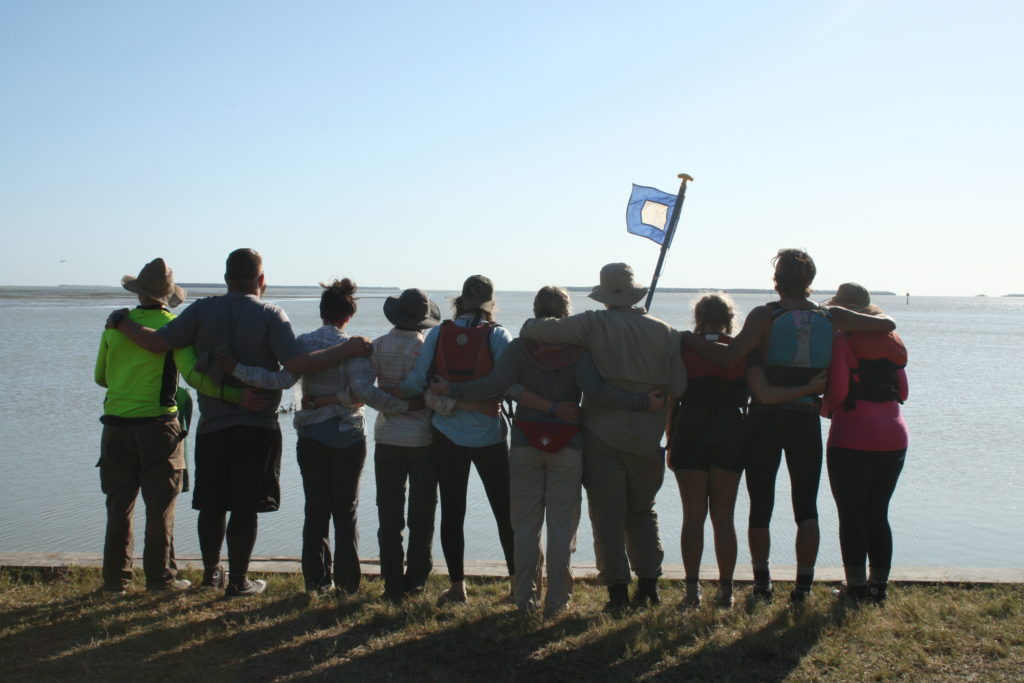
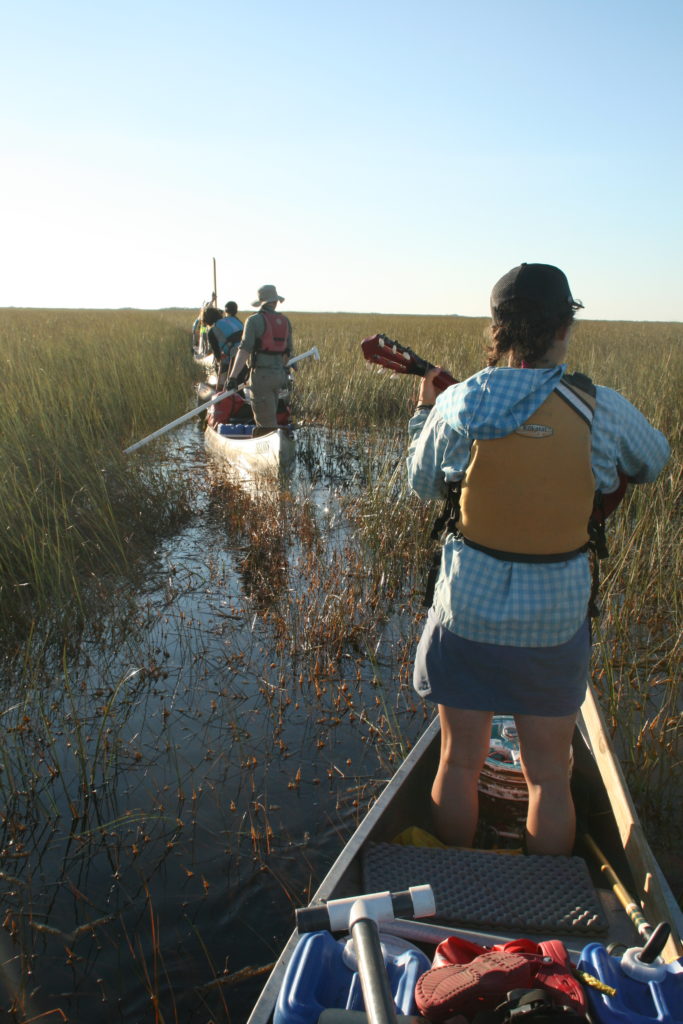
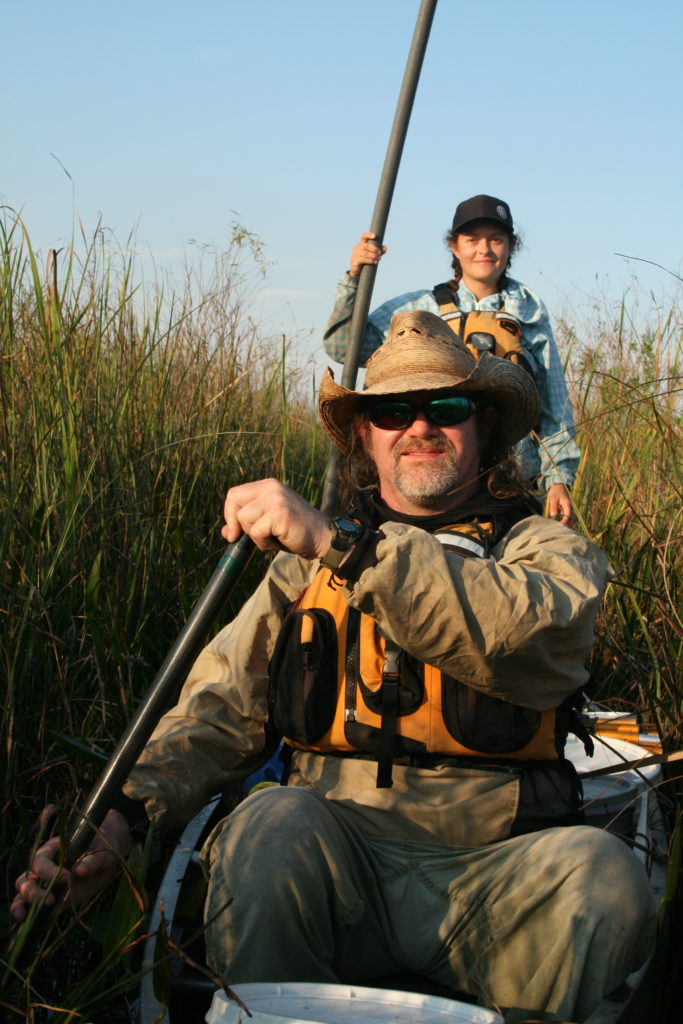
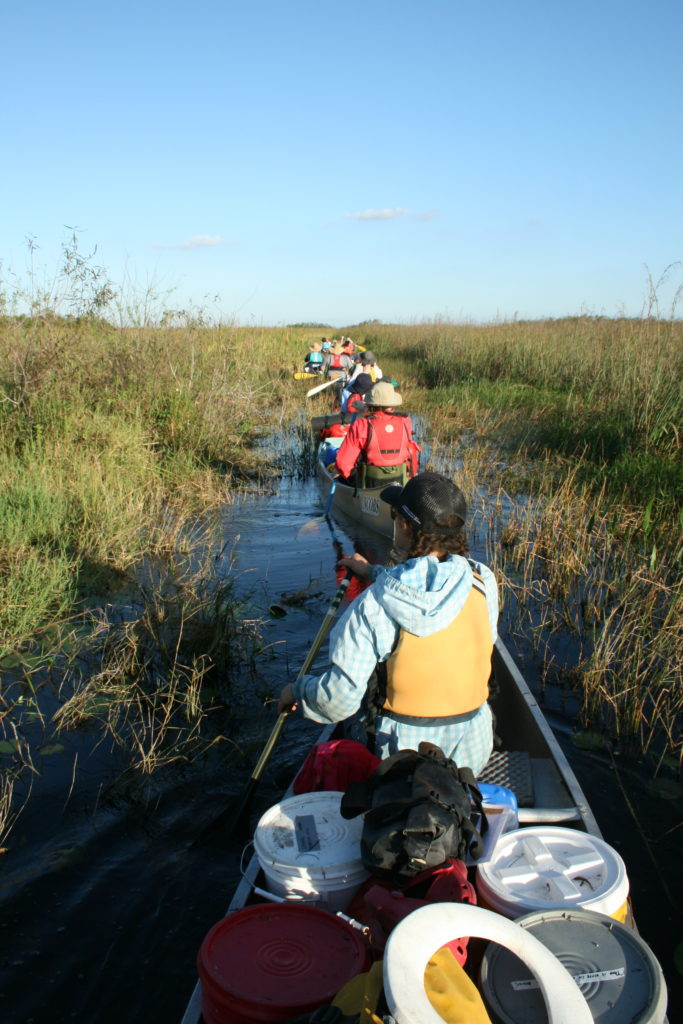
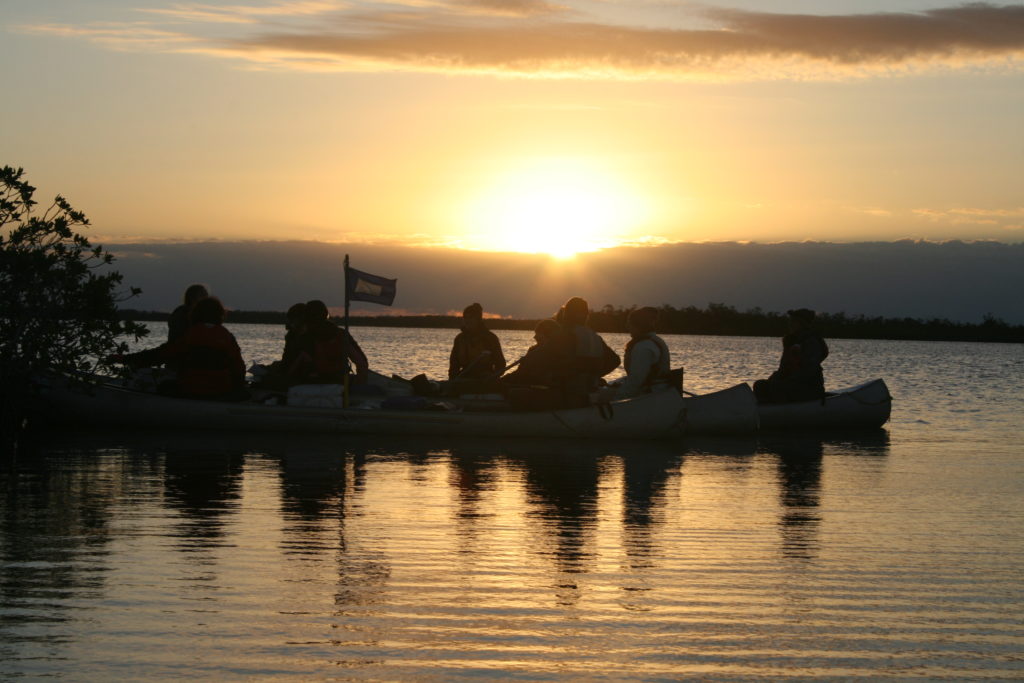

A New Fleet of Wilderness Systems Kayaks
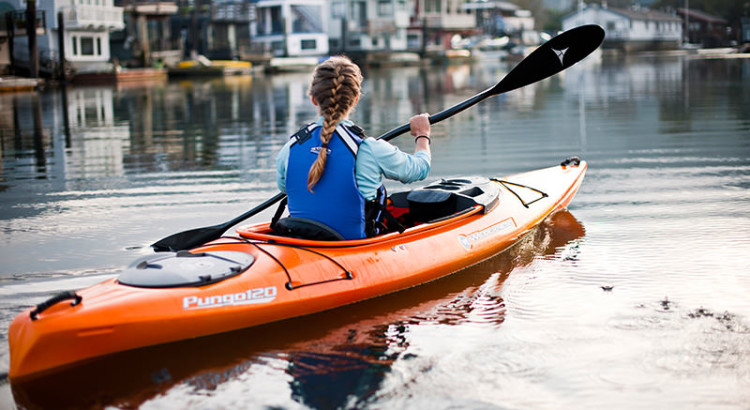
The 2017 summer season found us in the fortunate place of turning over our aging Old Town kayak fleet and replacing it with Wilderness Systems Pungo 12′ recreation kayaks, as well as two 14′ versions for instructors. These new kayaks are a big step up, both in terms of design and performance. The Pungos are faster and more stable, and also more maneuverable. The hatch cover seals and enclosures are much more user friendly. The Pungos offer three different areas of seat adjustability which also makes for a notable upgrade in comfort. On top of it all, these are significantly lighter vessels for loading, unloading, and transporting which all add up for our instructors over the summer season. Overall, AIAO staff and participants have been very happy with this upgrade to Pungo kayaks.
The Hunter’s Mind – An Alternative Perspective on ADD/ADHD
In the course of a year we work with dozens of schools and organizations, and many hundreds of young participants. Invariably, some of these young people have an ADD or ADHD diagnosis. It would be all too easy to lump these folks into some sort of confining category – unfortunately this is sometimes something that we witness – and let that negatively affect the ways in which we relate to these young people.
Thom Hartmann’s Hunter & Farmer breakdown of ADD has been an invaluable tool for us at AIAO as we try to understand and work best with some of our own staff, as well as the young people we serve who have ADD/ADHD. In its simplest form, Hartmann’s hypothesis states that what are now labeled as maladaptive and disruptive traits (i.e, disordered behavior) has had tremendous value in humanity’s evolutionary past. It’s just that culture and society have shifted so quickly that these once highly-valued and necessary attributes that allowed individuals and cultures to thrive, don’t fit as easily into the slowed down, modern farmer’s (agricultural) society that most humans now live in.
Check out the simple chart below for a simple breakdown of the hypothesis. You can also check out Hartmann’s book and additional information here.
Onward!
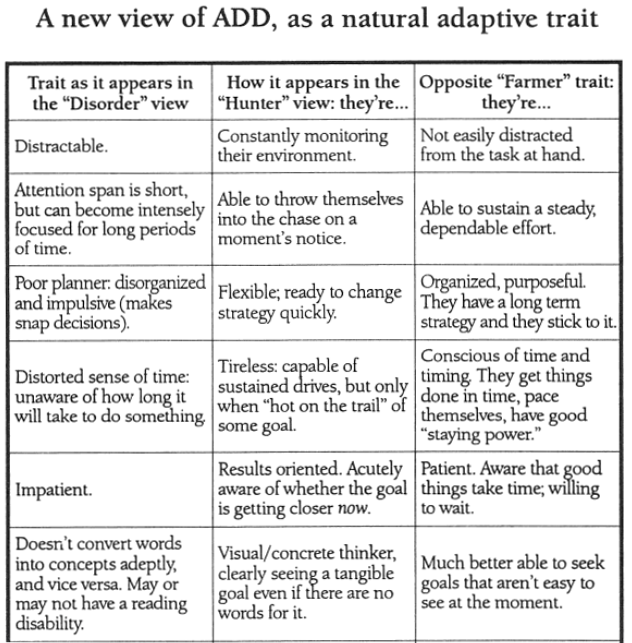
Dinosaurs in our Midst
 Every once in a while I have a vision – I am suddenly transported to a place in my mind where I can picture the banks of the Connecticut River swarming with large, bipedal dinosaurs. Did you know that the “first dinosaur tracks in recorded history” were found here in the Connecticut River Valley? (Or at least the first European person to take special note of them…)
Every once in a while I have a vision – I am suddenly transported to a place in my mind where I can picture the banks of the Connecticut River swarming with large, bipedal dinosaurs. Did you know that the “first dinosaur tracks in recorded history” were found here in the Connecticut River Valley? (Or at least the first European person to take special note of them…)
The story goes that in 1802, a farm boy by the name of Pliny Moody plowed up a slab of rock with tracks in it which he described as being “three-toed like a bird”. He brought it home to use as a doorstep. Local religious figures attributed the track to “Noah’s Raven”. Later the tracks were thought to have been made by a large, crocodile-like reptile and paleontologists named the creature Otozoum moodi in Pliny’s honor.
 It was an 1835 road paving project in the Greenfield area that got the attention of scientists, after a large volume of tracks were found. Dr. James Dean is credited with recognizing the scientific significance of the tracks. Professor Edward Hitchcock of Amherst College began to study the many tracks, thinking at first they were from some kind of “unknown ancient birds”. Hitchcock’s intensive study of the tracks essentially started the field of Paleoichnology (the study of fossil traces). And so it began.
It was an 1835 road paving project in the Greenfield area that got the attention of scientists, after a large volume of tracks were found. Dr. James Dean is credited with recognizing the scientific significance of the tracks. Professor Edward Hitchcock of Amherst College began to study the many tracks, thinking at first they were from some kind of “unknown ancient birds”. Hitchcock’s intensive study of the tracks essentially started the field of Paleoichnology (the study of fossil traces). And so it began.
You could spend your whole life learning about dinosaurs, of course. There are many places to learn about the history of dinosaurs in the Pioneer Valley and even visit tracks still in the ground outside. One of the most amazing places to visit is the Amherst College Museum of Natural History, since there has been study of these local dinosaurs since thye 1830’s! There is an incredible array of tracks as well as passionate staff who will impress you with their knowledge. This Yankee magazine article has a great list of “Places to see dinosaur tracks in southern New England.” The Nash Dinosaur Track Site and Rock Shop has a some great information as does the
If you have a few minutes or a lifetime, drop into this little rabbit hole of amazing history and see the place you live with new eyes.
The Importance of Self-Care

“Self-care is a touchy subject. That’s because our society largely views self-care as selfish, slothful and overly indulgent…Yet, it’s anything but. Taking good care of yourself not only makes your life more fulfilling and contributes to your well-being, but it also extends to others.” – Margarita Tartakovsky, M.S.
In a field that requires as much energy as outdoor education, the importance of self-care cannot be overstated. That said, it’s also important for everyone else: educators, students, parents, etc.
The concept reminds me of the oxygen masks on airplanes: we are charged with putting on our own so that we are then better able to help others. It’s the same in many other areas of our lives.
Self-Care Ideas:
Have a game nights with friends and family, go on a nature walk, meditate, take a yoga class, garden, journal, cook a delicious meal, listen to a favorite podcast, work on a craft/DIY project, get a massage, read a favorite book, go to the movies or a concert, tell bad jokes with a loved one.
The sky’s the limit! Whatever you find relaxing and rejuvenating can be employed in your self-care practice. For some deeper self-care suggestions, check out this article on PsychCentral.Com.
Moving ‘Natural Capital’ from Metaphor to Reality
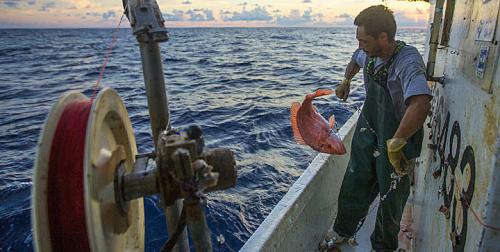
For better or worse, nature and ecosystems have been discussed in the ongoing dialogue/debate about the environment and anthropogenic climate change in economic terms. A new article by Eli Fenichel and Joshua Abbott explores this topic with more nuance than is common in the regular discourse.
“The researchers show the importance of valuing natural resources as a capital asset that stores wealth for the long term (Emphasis Added) rather than simply as commodities that are bought and sold in the day-to-day by developing a formula that combines economic with biophysical measurements and quantifies the feedbacks between nature and human behavior.” – Kevin Dennehy
To read more of Dennehy’s piece, visit Phys.Org. And, to read Fenichel and Abbott’s original article, find yourself a copy of the Journal of the Association of Environmental and Resource Economists.
Getting to Know Bark!
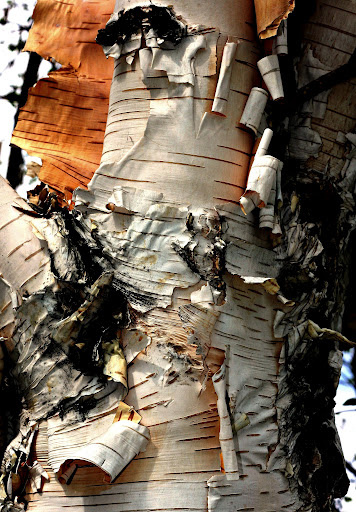
Photo by Sharon Peterson, Flickr
Last weekend, a group of AIAO’s core staff and community had the very good fortune to take part in a workshop presented by Bark author Michael Wojtech, which was simple and illuminating, and focused on some of Bark‘s basics.
Completed while obtaining his M.S. in Conservation Biology from Antioch University, Bark is an amazing and relatively simple guide for identifying trees with the information you have in front of you, rather than what may be 3o feet in the air, out of sight and out of reach. Put another way, Bark brings tree identification down to our level: naturalists, scientists, academics, nature enthusiasts, and others will find it the information in its pages invaluable.
You can visit his website, KnowYourTrees.com, and you can also check out this great article he wrote for Northern Woodlands magazine.
“Make salad, not war.”

“You could take a different view of the dandelion. It’s a view that goes back millennia, to our foraging ancestors who saw T. officinale as an herbal medicine and valuable food source. They’re good steamed, sautéed or simply blanched in hot water and drained. Dandelion leaves make a healthful salad (the best time to harvest them is early spring, before a plant blooms). Yellow flower heads can be used to make wine. The taproot can be harvested for food or to make a coffee-like beverage. The dandelion’s value on the menu is evidenced by the fact that plant breeders have developed cultivars with bigger leaves, or are self-blanching to take out the bitterness.”
For more of this great article, featuring plant expert Arthur Haines, visit Northern Woodlands.
Disclaimer and Caution: When harvesting wild edibles and medicinals you should be certain you are collecting the appropriate plants; search for classes and workshops in your area at local nature centers. Also, be careful where you harvest; yards, roadsides, high-tension power line areas, and others may utilize pesticides and chemicals to manage plants and insects.
Suggested Reading: Massachusetts Wildlife Magazine
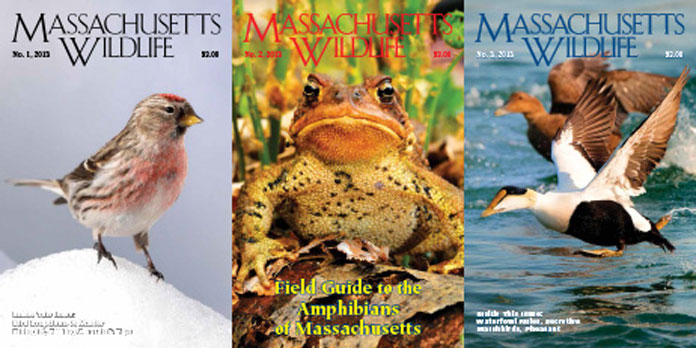
“Massachusetts Wildlife magazine is a quarterly publication packed with award-winning articles and photos on the environment, conservation, fishing, hunting, natural history and just about everything relating to the outdoors in Massachusetts.”
“Get all the inside information on wildlife and fisheries management, endangered species restoration programs, critical habitat protection and the outstanding people who are working to conserve our outdoor resources. If anyone in your family has an interest in the outdoors, this is the magazine they can’t do without!” – From the Fisheries and Wildlife Website
I’ve been thumbing through this magazine for decades (my family had a subscription all throughout my childhood, and I have one now), and it never disappoints. From the stunning photography which is often taken by Bay State residents to the insightful articles, you can’t go wrong with a subscription (my favorite recent edition is the guide to Massachusetts amphibians!).
It’s a steal for the price: one year will cost you $6, and two will cost $10. So, with the cost of conservation efforts steadily rising, and the the funds to cover them plateaued, a subscription Massachusetts Wildlife is literally a small price to pay for great information and supporting a great cause.
Check out their website today!
Discovered: Longest Mammal Migration in the Lower 48
“When wildlife biologist Hall Sawyer strapped radio collars to dozens of mule deer wandering southwestern Wyoming’s Red Desert in January 2011, he thought the humble animals were as rooted as the landscape’s windblown sage, low hills and staked fence posts.
Then the deer vanished out of radio range.
He chartered a plane to search all of western Wyoming. When the pilot found them, Sawyer was amazed. In just a few months, hundreds of Red Desert deer had walked more than 150 miles north into the craggy mountains south of Yellowstone National Park. Their trek, a 300-mile round trip, marks the longest known migration of any mammal in the contiguous United States.” – From Revealed: Biologists discover longest mammal migration in Lower 48 by Nate Schweber
For more information, see the article at article at Al Jazeera America and the Wyoming Migration Initiative.
 Adventure In Adventure Out
Adventure In Adventure Out